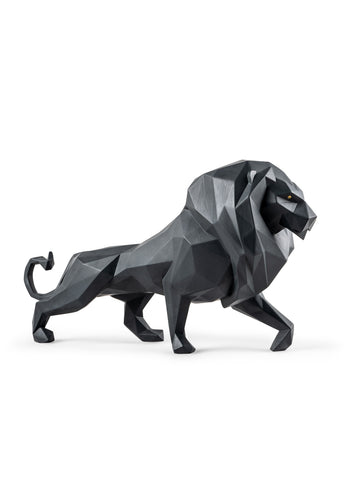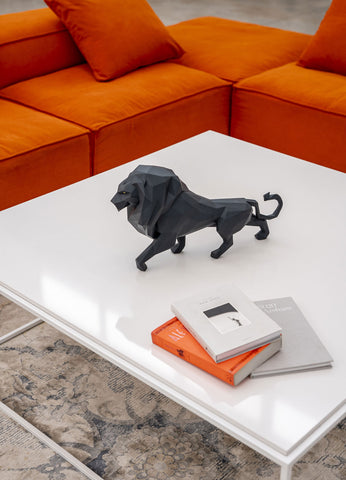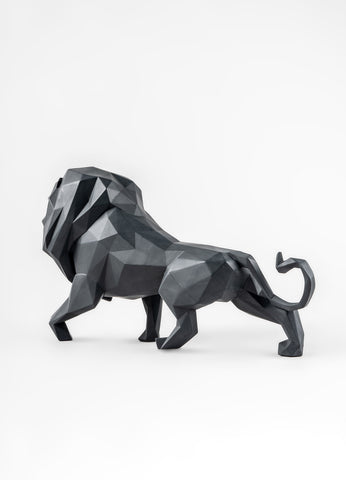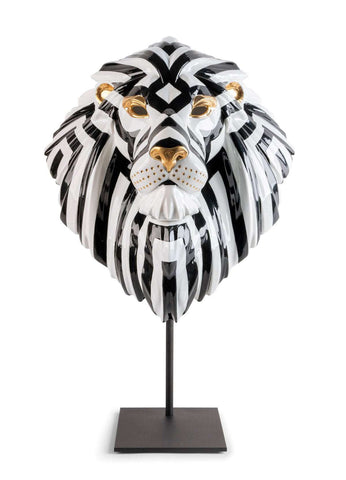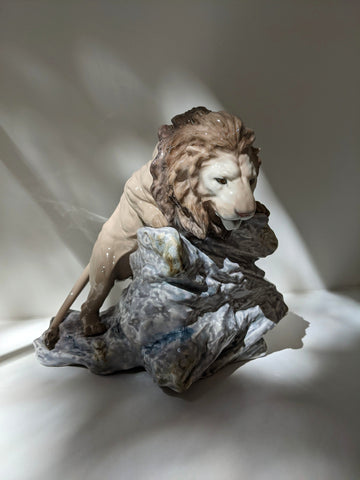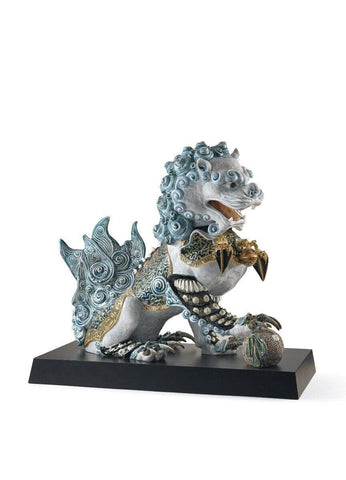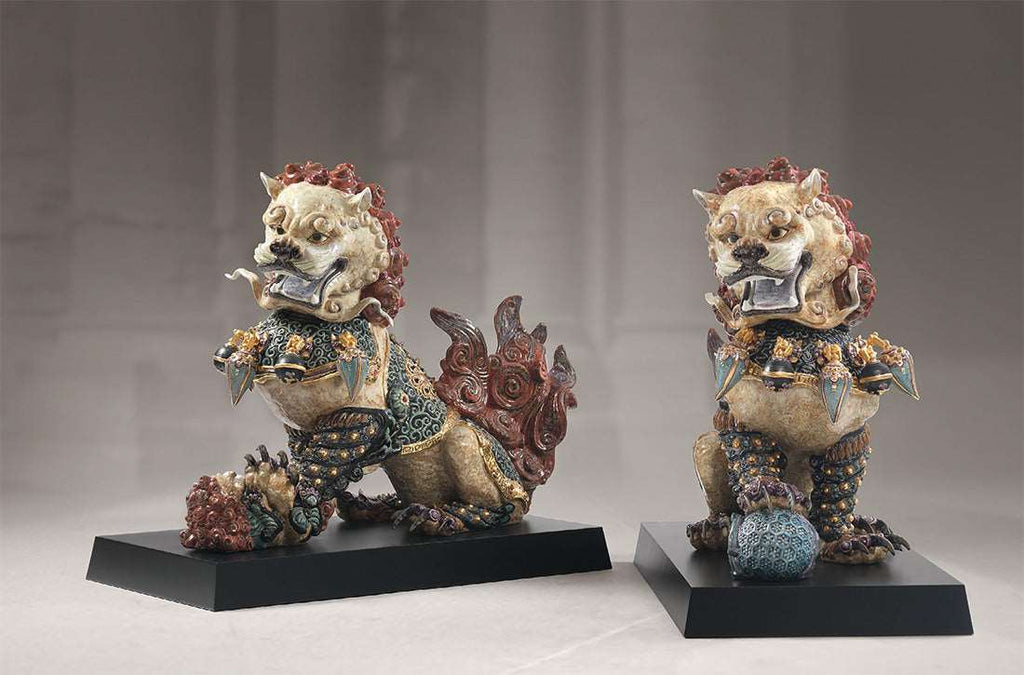Lladró Lions: A Symbol of Divine Protection Across Cultures
Tagged with:Culture & Civilisation
Share
The lion has stood as a powerful symbol of protection and divine presence in various cultures around the world. The oldest known animal sculpture ever found is a half-human, half-lion sculpture. Craved from a mammoth’s tusk, the 32,000-year-old lion sculpture is potentially the eldest of the ancient gods. From ancient sculptures to Lladró's contemporary porcelain, the lion's association with gods and guardianship has endured, shaping beliefs across millennia.
The Black Lion: Embodiment of Divine Forces in Hindu Mythology
Since lions were native to Southern Asia, they were a common symbol in the Imperial court of India and Hindu mythology. Black lions, in particular, are associated with the goddess Kali. The fierce and caring Mother Goddess who embodies both destruction and the creation of life. Often depicted riding a lion, Kali symbolizes the eradicator of evil forces, offering protection and granting wishes to those who seek her aid. Her and her lion’s darkness represents the darkness from which everything was born.
Lladró's interpretation with their new Origami Lion Sculpture Matt Black in the Origami Collection serves as a powerful reminder of Kali's benevolent presence, evoking the Mother of Life’s role as the protector and destructor of evil and tamasic desires, offering solace and reassurance to devotees.
Origami Lion Sculpture Matt Black
The Lion in Greek Mythology: Symbol of Heroic Courage
Greek mythology intertwines the lion with the demigod Heracles, symbolizing courage and indomitable strength. At the start of his journey to complete the 12 labours given to him by the god Apollo, the hero was tasked with killing the impervious Nemean Lion ravaging Nemea. Heracles strangled the lion with his bare hand and skinned the lion. He is often portrayed wearing the lion’s golden skin as armour, with his head peaking out of its gaping jaws. Heracles' triumph over the Nemean Lion is a symbol of resilience while the indestructible hide armour itself symbolises divine protection. Heracles with his hide armour is immortalised as a hero who overcame adversity, offering hope and inspiration to those facing their own trials.
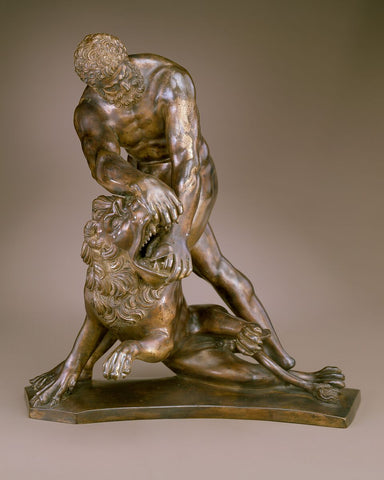
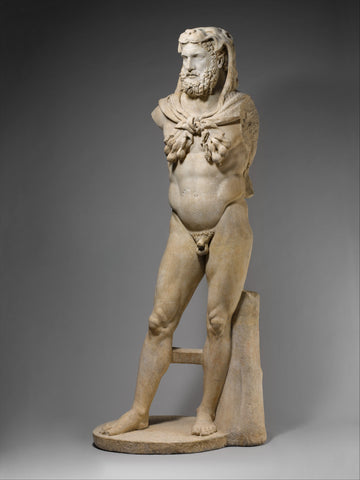
Hercules and the Nemean Lion (The Metropolitan Museum of Art) (left), Marble statue of a bearded Hercules (The Metropolitan Museum of Art).
Lladró’s contemporary porcelain mask collection prompts this mythological connection, offering individuals the opportunity to possess their own symbol of courage and invincibility through the intricately crafted Black and Gold Lion Mask, symbolizing strength, growth, and protection in the face of challenges.
Black and Gold Lion Mask
King of the Wild: Radiant Light Created in the Image of God
In Christianity, the lion is a symbol of divinity, embodying both the radiant light of the sun and the formidable power to dispel darkness. The lion holds significant meaning as a representation of God's authority and judgment. Just as Jesus is often likened to the "light of the world," the lion is portrayed as the great destroyer of darkness, heralding the coming judgment of humanity.
Experience the majestic presence and symbolic power of the lion with Lladró's Lion Pouncing Sculpture. This exquisite piece captures the regal essence of the king of the wild, poised in a stance of strength and determination, juxtaposed against the delicate porcelain and soft pastel shades, serving as a poignant reminder of the King of kings’ awe-inspiring presence and His strength to vanquish darkness.
Lion Pouncing Sculpture
The Blue Lion of Buddhism: The Symbol of Wisdom
In Buddhism, the lion symbolizes protection and wisdom, appearing in art as early as the 3rd century. It represents guardianship of the dharma, Buddha's teachings. Manjushri, the Bodhisattva of Wisdom, is often depicted riding a blue lion, wielding a flaming sword in one hand and holding a scripture on a lotus in the other. The lion symbolizes the mastery of the mind through wisdom, akin to taming a ferocious lion.
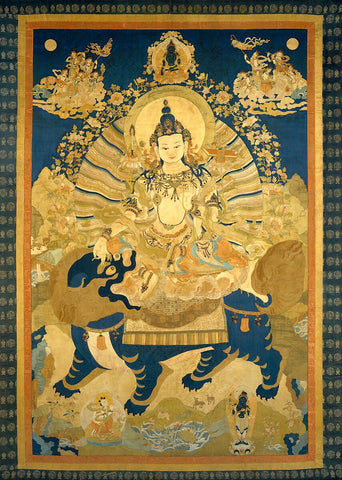
The Metropolitan Museum of Art: Asia. New York: The Metropolitan Museum of Art, 1987, p. 114, pl. 73.
Lladró mirrors this symbolism perfectly with their Guardian Lion and Lioness Sculpture Blue Limited Edition. The blue tones and intricate gold lustre blend tradition with contemporary craftsmanship, offering a tangible representation of spiritual protection and wisdom in the form of a timeless artistic creation.
Guardian Lion Sculpture Blue Limited Edition (left) & Guardian Lioness Sculpture Blue Limited Edition (right).
Guardian Lions: The Divine Protectors of a Balanced World
Although lions were not native to China, the majestic creature captivated the Han emperors, leading to their adoption as iconography for protection. Imperial records from this era praised the qualities of the lion, which subsequently adorned tombs and shrines of the Han royalty as guardians. Throughout subsequent dynasties, the lion's role as a symbol of protection persisted, evolving in its depiction to reflect changing philosophical and a greater emphasis on structure and balance.
The protective lions evolved from identical pairs into distinct male and female forms symbolizing the balance of an orderly society. The lions were depicted with symbolic elements: the male with a beribboned ball representing the world, and the female with a cub symbolizing chaos. The guardian lions ultimately represents a harmonious balance between order and chaos in Chinese society.
Guardian Lion and Lioness Sculpture Set. Red. Limited Edition
To this day, the guardian lions are still seen adorning entry ways of Chinese houses and temple. As a symbol of protection, you can bring home a pair of Lladró's guardian lions and let their balancing order and chaos maintain the balance and harmony of your own home.

